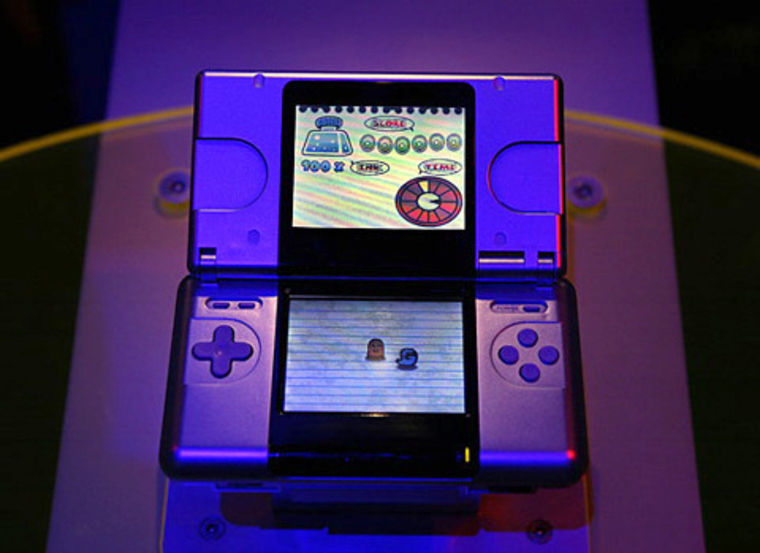Nintendo CEO Satoru Iwata and top execs at the gaming company's headquarters in Kyoto have every reason to be shouting the Japanese congratulatory cheer of "banzai" these days. For one thing, Nintendo's DS and DS Lite portable gaming system is enjoying light-speed growth.
On top of that, Nintendo's Wii console has blown away Sony's PlayStation 3 in the early stages of the hotly contested battle for next-gen gaming consoles. Aided by a shortfall of PS3s in the critical U.S. market, Nintendo sold 1.1 million units of the Wii since the product's launch date last November, vs. 687,000 PS3s during roughly the same period. Sales of popular Nintendo game titles such as The Legend of Zelda: Twilight Princess and New Super Mario Bros. are also quick.
The Wii has outperformed the initial rollout phase of the high-powered Microsoft Xbox 360, which was released in November, 2005. Microsoft managed to sell only 607,000 units in the U.S. by the end of 2005.
As a result, says Standard & Poor's equity analyst Clyde Montevirgen, "Nintendo Wii won the launch phase." S&P, like BusinessWeek, is a unit of the McGraw Hill Companies.
Mass Market Potential
Of course, Nintendo still has a ways to go before it can claim industry dominance. Sony's PlayStation 2 holds the all-time sales record, with more than 100 million sold. Also, in the next-gen console category, the leader in terms of units sold is the Xbox 360, with 10.4 million units sold as of the end of 2006.
Still, Nintendo executives, and some game analysts, believe the Wii's mass market potential could make it a breakthrough product for the $30 billion video game industry. Worldwide, Nintendo has sold 3 million units and is confident that figure will double by the end of March. Sony has set a similar global sales goal for PS3 by the end of the first quarter and has set a Mar. 23 launch date for Europe, where the rollout of its critical game console was delayed late last year because of a parts shortage.
Unlike Sony and Microsoft, which spent lavishly on blisteringly fast chips, graphics, and cutting edge disk technology, Iwata insisted Nintendo designers use energy-saving chips and a standard optical disk player to lower product costs. That enabled Nintendo to set the Wii's retail price at about $250, several hundred dollars less than the Xbox 360 and PS3.What's more, unlike Sony and Microsoft with their new consoles, Nintendo makes a profit on every Wii sold.
Older-Gen Gamers
But it's the Wii's playability that's had the biggest impact on gamers. Iwata pushed his team to come up with a radically new controller design that would make the Wii a quality experience for sophisticated gamers and novices alike. The result was a wireless, wand-shaped gadget with built-in motion sensors and a gyro-meter to translate action directly onto a TV screen.
Nintendo is also working hard to woo new types of gamers. Figuring the hardcore crowd would need little motivation to check out the Wii, the company devoted about 70% of its $40 million TV, print, and online launch marketing campaign in the U.S. last fall to older and less experienced gamers. "We have been able to satisfy existing gamers and add the expanded audience of adults older than 25," says George Harrison, Nintendo of America's senior vice-president for marketing.
The only negative publicity the product has received so far has been that avid gamers tend to lose control of their controllers. Nintendo responded to stories about renegade Wii controllers accidentally smashing through TV screens by offering consumers stronger wrist straps.
Mario, Come Home
A more serious issue Nintendo faces is avoiding the kind of parts shortages and production delays that have plagued Sony. Nintendo has been working with suppliers such as Matsushita Electric, whose Panasonic unit makes disk drives for the unit, and IBM and ATI Technologies, which make the core processor and graphic chips.
Right now, meeting demand is a bit of a struggle, says Harrison. "We are shipping the Wii, and they are generally selling out in a day or two," he says.
Of course, the serious cash made in this business is on the game software side, where operating margins can run 35% to 40% on games Nintendo has developed over the years that are compatible with the Wii. This is a company, after all, that created icons such as Mario, Donkey Kong, and Pokémon.
In the first quarter of 2007, third-party game developers such as Electronic Arts will release Wii-compatible games titles such as Tiger Woods PGA Tour 07. Other companies such as Buena Vista, Majesco, and Ubisoft are launching new ones, too.
Macquarie Securities analyst David Gibson reckons the average Wii owner will buy more than three games a year — and the bulk of the games will be made in-house by Nintendo.
None of this has been lost on investors. On Jan. 25 the company reported a 40% jump in third-quarter profits of $644 million, and its stock touched a 52-week high of $27.60 in trading on the Tokyo Stock Exchange. Nintendo shares have more than doubled since early February, 2006 — and so have its U.S. depositary receipts, which now trade at about $35.75.
Investors have also been cheered by the success of the DS portable lineup at Nintendo. Since its launch in November, 2004, the line has sold 10 million units in the U.S. and enjoys a global user base of 35 million, powered by popular gaming titles such as Brain Age and Nintendogs.
In a category once dominated by Sony's PSP portable, the Nintendo DS has been a hit with women and gaming novices. Its dual touch screen design, voice recognition capability, and easy-to-use stylus have connected with consumers. To keep the momentum going, some 20 new DS games are expected to roll out in the first quarter of 2007.
